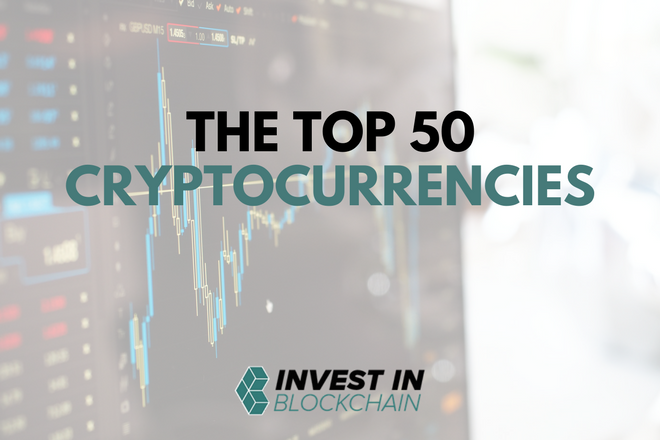Let’s face it: there are a lot of cryptocurrencies out there, with new ones coming out almost daily and old ones disappearing seemingly just as fast as they appeared. It’s easy to get overwhelmed.
If you are new to cryptocurrencies, this is an excellent starting point to learn about each of the top 50 cryptocurrencies (by market cap). Even if you’re a crypto veteran, this is a great resource to reference if you ever get any of the top 50 confused, or if you want to read more about a new coin which has joined the ranks.
Our hope is to point you in the right direction, spur your interest to do more research, and steer you away from the potential scams out there (And yes, there are potential scam coins in the top 50!)
Here at Invest In Blockchain, we are obsessed with researching the internet for all things crypto. The information found in this post is the result of hundreds of hours of painstaking research by me and other writers on our team.
Note that this list is constantly changing and I will do my best to keep it up-to-date, but the top 50 moves almost daily! Please refer to coinmarketcap.com for the latest information on the top 50 cryptocurrencies and their prices.
Let’s get started!
(Information accurate as of November 12, 2018)
#1 – Bitcoin (BTC)
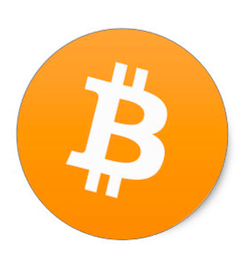
The king of the crypto world, Bitcoin is now a household name; to many, it is synonymous with “cryptocurrency.” Its purpose is to provide a peer-to-peer electronic version of cash to allow payments to be sent online without the need for a third party (such as Mastercard).
The rapid rise in Bitcoin’s price has brought about an explosion of new Bitcoin investors. With the huge increase in interest has come a rise in merchants accepting Bitcoin as a legitimate form of payment. Bitcoin is fast moving towards its goal of becoming a currency accepted worldwide.
Bitcoin’s development is led by Bitcoin Core developer Wladimir J. van der Laan, who took over the role on April 8, 2014. Bitcoin’s changes are decided democratically by the community.
For an in-depth look at Bitcoin, including an explanation of Bitcoin mining, Bitcoin’s history, an analysis of Bitcoins’ value and a description on how bitcoin actually works, see our comprehensive guide “What is Bitcoin? Everything You Need to Know About Bitcoin, Explained.”
For a more detailed description of Bitcoin’s economics, what makes money and how Bitcoin works in the economy as a whole see: “Bitcoin Explained” and “Bitcoin is a Deflationary Currency.”
#2 – Ethereum (ETH)
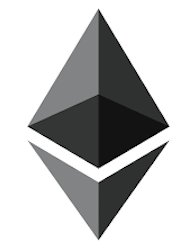
Ethereum is the revolutionary platform which brought the concept of “smart contracts” to the blockchain. First released to the world in July 2015 by then 21-year-old Vitalik Buterin, Ethereum has quickly risen from obscurity to cryptocurrency celebrity status.
Buterin has a full team of developers working behind him to further develop the Ethereum platform. For more background information on Buterin, read our article, “Vitalik Buterin: The Face of Blockchain.”
Ethereum has the ability to process transactions quickly and cheaply over the blockchain similar to Bitcoin, but also has the ability to run smart contracts. For future reading on smart contracts, see “What’s the Difference Between Bitcoin and Ethereum” but for now, think automated processes which can do just about anything.
For further reading on Ethereum, including an analysis of the platform’s strengths and future prospects, read “What is Ethereum, Everything You Need to Know Explained.”
#3 – Ripple (XRP)
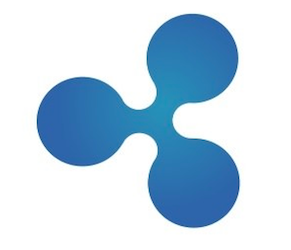
Ripple aims to improve the speed of financial transactions, specifically international banking transactions.
Anyone who has ever sent money internationally knows that today it currently takes anywhere from 3-5 business days for a transaction to clear. It is faster to withdraw money, get on a plane, and fly it to your destination than it is to send it electronically! Not to mention you will be paying exorbitant transaction fees — usually somewhere around 6% but it can vary depending on the financial institution.
Ripple’s goal is to make these transactions fast (it only takes around 4 seconds for a transaction to clear) and cheap.
The Ripple team currently comprises over 150+ people, making it one of the biggest in the cryptocurrency world. They are led by CEO Brad Garlinghouse, who has an impressive resume which includes high positions in other organizations such as Yahoo and Hightail.
Check out “What is Ripple” for more information, including a closer look at what they do, controversies and future prospects.
#4 – Bitcoin Cash (BCH)
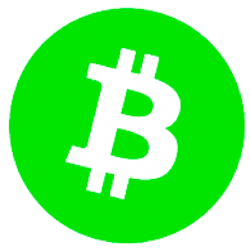
Bitcoin Cash was created on August 1, 2017 after a “hard fork” of the Bitcoin blockchain. For years, a debate has been raging in the Bitcoin community on whether to increase the block size in the hope of alleviating some of the network bottleneck which has plagued Bitcoin due to its increased popularity.
Because no agreement could be reached, the original Bitcoin blockchain was forked, leaving the Bitcoin chain untouched and in effect creating a new blockchain which would allow developers to modify some of Bitcoin’s original programmed features.
Generally speaking, the argument for Bitcoin Cash is that by allowing the block size to increase, more transactions can be processed in the same amount of time. Those opposed to Bitcoin Cash argue that increasing the block size will increase the storage and bandwidth requirement, and in effect will price out normal users. This could lead to increased centralization, the exact thing Bitcoin set out to avoid.
Bitcoin Cash does not have one single development team like Bitcoin. There are now multiple independent teams of developers.
Read “What is Bitcoin Cash” for more information. You can also check out their reddit and official webpage.
#5 – Stellar Lumens (XLM)
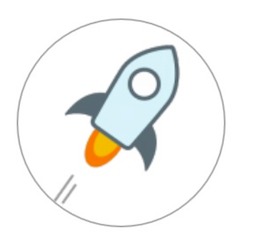
In a nutshell, Stellar Lumens seeks to use blockchain to make very fast international payments with small fees. The network can handle thousands of transactions a second with only a 3-5 second confirmation time.
As you may know, Bitcoin can sometimes take 10-15 minutes for a transaction to confirm, can only handle a few transactions a second and, in turn, has very high transaction fees.
If this sounds a lot like Ripple, you’re right! Stellar Lumens was based off of the Ripple protocol and is attempting to do similar things. Some of Stellar Lumens’ main uses will be for making small daily payments (micropayments), sending money internationally, and mobile payments.
Stellar Lumens is focusing on the developing world and, more specifically, the multi-billion dollar industry of migrant workers who send money back to their family in impoverished countries.
The Stellar Lumens team is led by Jed McCaleb, who has worked in numerous successful startups in the past such as eDonkey, Overnet, Ripple, and the infamous Mt. Gox.
For more information on Stellar Lumens, including the history and what sets Stellar Lumens apart, see “What are Stellar Lumens.” You can also learn about the differences between Stellar Lumens and Ripple. And here’s why we think XLM is a smart long-term investment.
#6 – EOS (EOS)
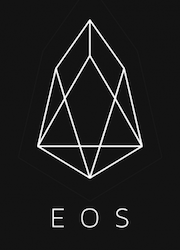
Billed as a potential “Ethereum Killer,” EOS proposes improvements that can challenge Ethereum as the dominant smart contract platform. One main issue EOS looks to improve is the scalability problems which has plagued the Ethereum network during times of high transaction volume, specifically during popular ICOs.
A perhaps more profound difference EOS has, compared to Ethereum, is the way in which you use the EOS network. With Ethereum, every time you make modifications or interact with the network, you need to pay a fee. With EOS, the creator of the DAPP (decentralized app) can foot the bill, while the user pays nothing. And if you think about it, this makes sense. Would you want to have to pay every time you post something on social media? No, of course not!
In addition to this, EOS has a few other technical advantages over Ethereum such as delegated proof of stake and other protocol changes. Just know that EOS has some serious power under the hood to back up the claim of “Ethereum Killer.”
EOS was created by Dan Larrimer who is no stranger to blockchain or start ups. He has been the driving force behind multiple successful projects in the past such as BitShares, Graphene and Steem.
For more information on EOS such as how and where to buy EOS tokens, EOS’s vision and potential challenges, see “What is EOS.” If you’re thinking about investing in EOS, check out “6 Reasons to Invest in EOS (Opinion).”
#7 – Litecoin (LTC)
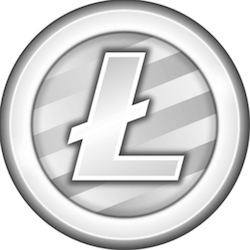
Similar to Bitcoin, Litecoin is a peer-to-peer transaction platform designed to be used as a digital currency. Due to some notable technical improvements, Litecoin is able to handle more transactions at lower costs. Litecoin has been designed to process the small transactions we make daily.
Litecoin is sometimes referred to “digital silver” while Bitcoin is known as “digital gold.” This is because traditionally silver was used for small daily transactions while gold was used as a store of wealth and was not used in everyday life.
The Litecoin blockchain is a fork from the Bitcoin chain. It was initially launched in 2011 when its founder, Charlie Lee, was still working for Google. Well-known as a cryptocurrency expert, Charlie Lee is backed by a strong development team who appear to be achieving what they set out to do. They have recently achieved a very notable accomplishment with the first successful atomic swap.
For an in-depth discussion on what Litecoin does, how it is different than Bitcoin and the team backing up the development, see “What is Litecoin.”
#8 – Cardano (ADA)
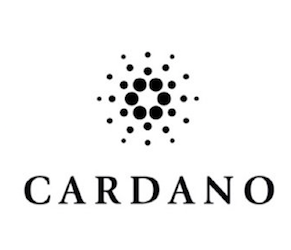
Cardano is a smart contract-focused blockchain. It was originally released under the name Input Output Hong Kong by Charles Hoskinson and Jeremy Wood, a few of the early team members of Ethereum, and later rebranded into Cardano.
Cardano is trying to fix some of the largest problems the cryptocurrency world which have been causing ongoing issues for years such as scalability issues and democratized voting.
They have the potential to challenge Ethereum’s dominance in the smart contract world. Cardano is developing their own programing language similar to Ethereum; however, they are focusing more heavily on being interoperable between other cryptocurrencies.
While some cryptocurrencies are all bite but no bark, Cardano is quite the opposite. They are quietly focusing on a strong software which will be completely open-source.
Cardano’s team comprises some of the best minds in the industry, and they seek to create a strong foundation which others can build upon for years to come.
For up-to-date information on Cardano’s status, see their Reddit page or official website. You can also read our article “What is Cardano” to learn more about them.
#9 – Monero (XMR)
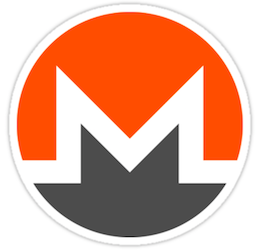
Monero is a digital currency designed to be used as a completely anonymous payment system.
A common misconception with Bitcoin is that it is completely anonymous. In reality, all payments processed on the Bitcoin network are recorded on a public ledger (blockchain), so Bitcoin is actually only partially anonymous or “pseudonymous.”
This means that you can, in theory, trace back every transaction a coin has been involved with from its creation. Though users aren’t able to inherently link the public key on the blockchain with the private keys used to store the coins themselves, there will always exist a correlation between the two.
Monero has solved this problem by implementing cryptonic hashing of receiving addresses, therefore separating the coin from the address it is going to. This can be hugely valuable for anyone wishing to conceal their purchases.
The Monero development team consists of 7 core developers, only two of which are publicly known. There have been over 200 additional contributors to the project and software updates are implemented every six months or so.
To learn more about Monero including its competitors and challenges, read “What is Monero.” If you’re thinking about investing in Monero, check out our opinion piece “Should You Invest In Monero?“.
#10 – Tether (UDST)
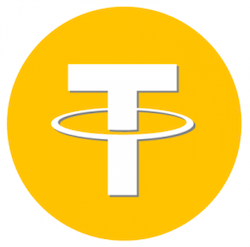
Tether is a cryptocurrency token issued on the Bitcoin blockchain. According to the Tether team, each USDT is backed by one US Dollar. The goal is to facilitate transactions with a rate fixed to the USD.
Amongst other things, Tether looks to fix some of the legal issues which can arise when trading cryptocurrencies and it aims to protect people from market volatility.
Tether has faced constant scrutiny over the years, in particular with regards to whether or not their currency is truly backed by USD. A full discussion of this issue can be found in: “59% Of Polled Investors Don’t Believe Tether Is Fully Backed By USD“.
#11 – TRON (TRX)
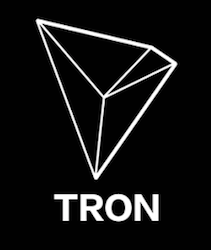
As stated in TRON’s whitepaper, “TRON is an attempt to heal the internet.” The TRON founders believe that the internet has deviated from its original intention of allowing people to freely create content and post as they please; instead, the internet has been taken over by huge corporations like Amazon, Google, Alibaba and others.
TRON is attempting to take the internet back from these companies by constructing a free content entertainment system. This will enable users to freely store, publish and own data, giving them the power to decide where and how to share.
The project is led by founder Justin Sun, who has been listed on the Forbes 30 under 30 list twice (in 2015 and 2017). In addition, Sun is a protégé of Jack Ma, founder of Alibaba Group, China’s former Ripple representative and the founder of Peiwo APP.
Sun has assembled a strong team with heavy hitters including Binshen Tang (founder of Clash of King), Wei Dai (founder of ofo, the biggest shared bicycles provider in China), and Chaoyong Wang (founder of ChinaEquity Group). Sun has also secured the support of a few notable angel investors such as Xue Manzi.
For up-to-date information on Tron and further discussion of the technology and team, see “What is Tron” and their website.
#12 – Dash (DASH)
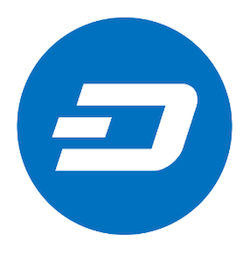
Dash (which comes from “digital cash”) aims to be the most user-friendly and scalable cryptocurrency in the world. It has the ability to send funds instantly confirmed by “double-send-proof” security with the added functionality of erasable transaction history and the ability to send transactions anonymously.
Like Bitcoin, Dash is meant to be used as a digital currency but has some added values such as much faster transaction times and lower fees. For a slightly higher fee, Dash has the added function of “instant send” which allows transactions to be confirmed almost instantly. This is one of the main selling points of Dash because many believe that this feature would allow it to be used in brick and mortar establishments.
The Dash development team consists of over 50 members and is led by former financial services professional Evan Duffield.
For the latest on Dash, see their official website and reddit page. You can also read “What is Dash” to learn more about the project.
#13 – IOTA (MIOTA)
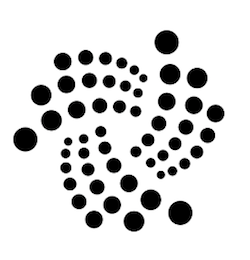
IOTA has seen many of the issues Bitcoin and Ethereum have with the PoW (Proof-of-Work) and PoI (Proof-of-Importance) models and looks to improve them with their revolutionary transaction validation network simply called “Tangle.”
When issuing a transaction in IOTA, you validate 2 previous transactions. This means you no longer outsource validation to miners which requires wasteful amounts of computing power and usually a large stake of coins. These required resources are, in effect, centralizing the currencies which many believe were created to be decentralized in the first place.
With IOTA, the more active a ledger is, the more validation there is. In other words, the more people who use it, the faster it gets. You don’t have to subsidize miners, so there are no fees on transactions. That’s right: zero.
The IOTA team has been actively developing blockchain technology since 2011, and created the IOTA foundation and company in 2016. Since its emergence, the team has been continuously growing, attracting exceptional talent from around the world.
For more information on IOTA’s team and their revolutionary“tangle” technology, check out “What is IOTA” and “3 Features That Give IOTA an Edge in Real-World Applications.”
#14 – Binance Coin (BNB)

Binance Coin is the coin used to facilitate operations on the Binance platform, a cryptocurrency exchange that is capable of processing 1.4 million orders per second. The name “Binance” is derived from the combination of the terms “binary” and “finance,” referring to the integration of digital technology and finance.
The BNB coin is used to pay exchange fees, withdrawal fees, listing fees, and all other possible transaction expenses on the Binance platform. In order to incentivize new users to do their cryptocurrency trading on Binance, the team is offering discounts when BNB is used to pay fees. The discount will be 50% in the first year, 25% in the second, 12.5% in the third, and 6.25% in the fourth year before the discount ends.
Binance was primarily marketed to Chinese cryptocurrency investors at first, but they also have English, Korean, Japanese, French, Spanish, and Russian versions of the platform.
For a deeper look into Binance, you can read the whitepaper or check out the trading platform here. Here’s a review of their first year of operations. Beginners can get a step-by-step guide in “Beginner’s Guide: How to Use Binance Exchange.”
#15 – NEO (NEO)

A leading platform for smart contracts and sometimes referred to as “China’s Ethereum.” NEO (formally Antshares) hopes to digitize many types of assets which were formerly kept in more traditional means, and therefore make it possible to use them in smart contracts.
To imagine a potential use case of NEO, think digitizing the title to a house into a smart asset, and then setting up that asset to automatically transfer to another person after payment for the house has been received. This would be, in effect, a simple smart contract.
NEO founder Da Hongfei is a leading figure in the cryptocurrency world and has worked on numerous blockchain projects in the past. The development team consists of 6 in-house investors and a large community of third-party developers.
For a complete overview of NEO, including the team, history and competitive analysis, check out “What is NEO.” You may also be interested in “Could NEO Be A Potential Moonshot? (Opinion)“.
#16 – Ethereum Classic (ETC)
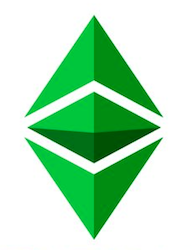
Ethereum Classic came about after a hard fork of Ethereum in 2016. The fork was a result of the infamous DOA hack where around 50 million dollars worth of Ethereum was stolen due to what was considered an oversight in the code.
The blockchain was forked in order to recoup the losses from this attack, but a small portion of the community did not wish to go back and change the original blockchain. Vitalik Buterin, founder of Ethereum, and subsequently the development team chose to go with the hard fork and work on what is now “Ethereum” today.
There is a lot of ongoing controversy with Ethereum Classic which can be better described on this reddit thread. For an in-depth discussion of Ethereum Classic, see”What is Ethereum Classic.”
#17 – NEM (XEM)
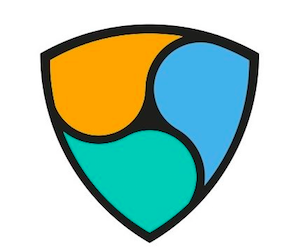
NEM (New Economy Movement) is the world’s first Proof-of-Importance (PoI) enterprise based on blockchain technology. With a focus on business use cases, the software was built from the ground up with adaptability in mind. NEM’s goal is for companies to use their “smart asset system” to implement customizable blockchains. A smart asset can be almost anything: a cryptocurrency token, a business’s stock or a company’s invoicing and records.
Some potential use cases for NEM’s technology include: voting, crowdfunding, stock ownership, keeping secure records, loyalty rewards point programs, mobile payments and escrow services. A list of NEM’s use cases can be found here.
The development of NEM is monitored by the Singapore-based NEM Foundation.
For more information on what NEM does and what sets NEM apart from its competitors, see “What is NEM.”
#18 – Tezos (XTZ)
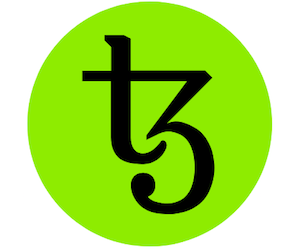
Tezos is a smart contracts platform hot off their wildly successful and controversial ICO. Tezos is working to create a cryptocurrency “commonwealth” where the holders of XTZ tokens have the ability to vote in new protocols, which will effectively give users full control over the future of the blockchain.
In addition, this allows for Tezos processes to incrementally change and improve overtime, instead of requiring the radical changes every now and then that tend to lead to hard forks.
With Tezos, users can vote for rewards to be allocated to developers who are making great contributions to projects, and therefore incentivizing the development of the platform.
Tezos has a few technological differences when compared to Ethereum such as the use of dPoS, the unique ability to upgrade without the need of a fork, and formal verification which allows for code to be mathematically proven to be correct. This is particularly useful in the case of sensitive calculations needed in fields such as aircraft design and nuclear development.
For more reading on Tezos see: “What Is Tezos (XTZ).”
#19 – Zcash (ZEC)
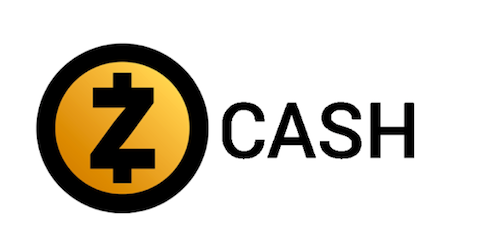
Zcash is a value transfer protocol forked off the Bitcoin blockchain. Zcash can be used like Bitcoin, with a few added improvements. With “zero cash technology,” Zcash shields both the amount transferred and the senders, making transactions truly anonymous.
Zcash is one of the new kids on the block in the world of “private transactions.”
An interesting note is that Ethereum is in the process of implementing some of Zcash’s technologies to enable transactions on the Ethereum network to be anonymous as well.
Zcash is being developed by the Zerocoin Electric Coin Company. They’ve had some great successes, most notably JP Morgan’s announcement that they would implement Zcash’s privacy technology to Quarum, a technology JP built on Ethereum.
Zcash was recently featured on the Radiolab episode The Ceremony.
Interested in investing in Zcash? Here’s the opinion of one of our writers: Should You Invest In Zcash?
#20 – VeChain (VET)
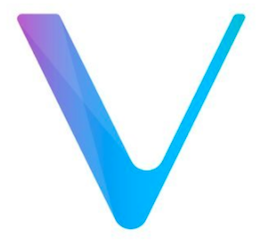
As described in VeChain’s development plan, the organization’s purpose is to build “a trustfree and distributed business ecosystem based on the Blockchain technology self-circulated and expanding.”
They plan to do this by creating an efficient trustless business ecosystem to significantly reduce the wasteful information transfer systems of today.
Some of the areas and industries the VeChain platform is focusing on include eliminating counterfeiting in the fashion and luxury industry, food safety tracking systems, digitizing maintenance in the car industry and many other global supply chain processes.
For more information on VeChain, see their reddit and website. Read “What is Vechain” to learn about the project, and check out our investment opinion piece, “5 Reasons to Invest in Vechain.”
#21 – Bitcoin Gold (BTG)

Bitcoin Gold came about as a fork from the Bitcoin blockchain, and was originally announced late July 2017.
Bitcoin Gold was designed to change Bitcoin’s consensus mechanism, thereby allowing users to employ graphic processing units (GPU) and lowering the barrier to entry for new miners. The fork was also a switchover from bitcoin’s SHA256 to the same Equihash algorithm used by Zcash.
Some in the community consider Bitcoin Gold a scam, as discussed in “All That Glitters is Not (Bitcoin) Gold” and reddit posts such as these.
#22 – Maker (MKR)
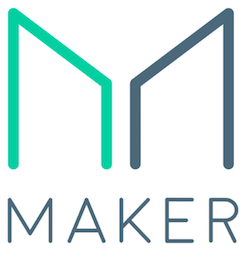
Maker is an asset-backed decentralized “stable coin” based on the Ethereum blockchain. Stable coins are a revolutionary approach to digital money as they remove large price volatilities in the coins.
Maker’s autonomous smart contract system is designed specifically to react to market fluctuations, keeping the price of 1 Dai equivalent to US$1. Each Dai is backed by Ether tokens as collateral, and is secured with an Ethereum smart contract.
In the event that the price of Ether drops below the predetermined threshold, the smart contract would automatically liquidate, keeping the collateral at a safe level and therefore preventing the Dai token from collapse.
By holding a MKR token, you become a member of Maker’s DAO and are entitled to certain rights as defined in Maker’s technical documents.
For a non-technical overview of Maker, see their whitepaper. For a technical analysis and more information on the functionality of the smart contracts, look into their purple paper. To read more about Maker, see “What is Maker.”
#23 – OmiseGO (OMG)

“Unbank the Banked” is the slogan of Omise’s online platform OmiseGo and that’s exactly what Omise has set out to do. Founded in 2013 off of the Ethereum blockchain, Omise aims to revolutionize the financial dynamics in Southeast Asia.
Omise is targeting individuals and businesses of all sizes by improving the current financial system which is slow, outdated, and inaccessible to most “everyday” people in these countries.
With their planned online exchange OmiseGO, Omise seeks to speed up the way money is spent and sent, both domestically and internationally in Southeast Asia and beyond.
They have a lot to celebrate too. OmiseGo has been building partnerships in the region and have some key partnerships with McDonald’s and Credit Saison.
Omise has established a strong team of over 130 staff members located in different countries. CEO and founder of Omise, Jun Hasegawa, has been involved in multiple startups and worked for Google for over 16 years.
The OmiseGO platform has been endorsed by some of the heavy hitters in the cryptocurrency world such as Vitalik Buterin and Gavin Wood, the co-founders of Ethereum.
For more information on what OmiseGO aims to do, see “What is OmiseGo”. You may also want to check out “Should You Invest in OmiseGO (OMG)?” and “3 Great Reasons To Keep HODLing OMG.”
#24 – 0x (ZRX)
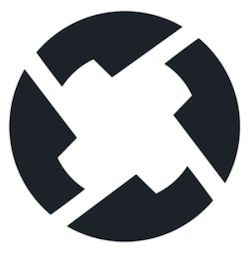
0x is a decentralized exchange built on the Ethereum blockchain that allows for ERC20 tokens to be traded. 0x’s intention is to serve as a building block from which others can easily create their own decentralized exchange.
One of the key differences between 0x and other decentralized exchanges is that 0x is fast. To reduce blockchain bloat, all orders are transported off-blockchain and later verified. In addition to making transactions quick, this removes the necessity of spending gas to pay for network transaction costs, like on other decentralized exchanges such as EtherDelta.
0x uses a open-source system of smart contracts which acts as an infrastructure for those wishing to build with the 0x protocol. A number of projects have already started building on the 0x platform already such as Augur, Aragon and Request Network.
For more information on the technology and team behind the 0x Project, see their whitepaper. You can interact with the community on their reddit page. To get on overview to the project, read “What is 0x Protocol (ZRX)?” and “5 Reasons to Keep an Eye on 0x Protocol.”
#25 – Dogecoin (DOGE)
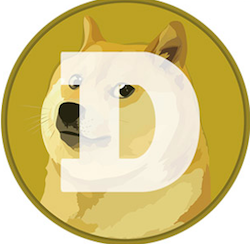
Dogecoin is a peer-to-peer electronic payment system based on the popular 2013 meme of the Shiba Inu dog. It was a fork of Luckycoin, which was itself a fork of Litecoin. The coin uses a PoW script mining algorithm similar to Bitcoin; however, while Bitcoin has a limited number of coins, there is no limit to the number of Dogecoins which can be created. The current rate of Dogecoin creation is over 5,000,000,000 coins a year.
Dogecoin is one of the oldest altcoins in existence, and for that reason they have a relatively large community. The reddit page has about 90,000 shibes (the group name for their community members).
Dogecoin is an excellent coin to use for micro transactions and is commonly used for tipping on articles. The coin is a sort of self-proclaimed “joke coin” which has gained a lot of popularity. This video is a good indicator of the lighthearted nature of the community as a whole.
For more information on Dogecoin, including a look at the history of the coin, the team and how to purchase, see: “What is Dogecoin.”
#26 – Decred (DCR)

Decred, which stands for decentralized credit, is a digital currency that uses a community-based governance model to determine the future of its blockchain protocol.
Decred was created and designed with the core mission of solving the problem of blockchain governance. Bitcoin in particular has experienced a lot of problems with the community not being able to agree upon protocol changes. Issues such as the block size debate has split the community, with a resolution yet to be found.
Decred employs a unique hybrid of PoW and PoS mining to decentralize the decision-making process. You can read more about this hybrid system in the Decred whitepaper.
The Decred team is made up of developers who volunteer their time and choose to remain pseudo-anonymous. The best way to interact with the community and find out more is through Decred’s reddit, Discord and Telegram channels.
For further reading on Decred, including a discussion on some of the challenges and where to buy and store the coins, see “What is Decred”. Also check out “Why You Should Keep an Eye on Decred.”
#27 – QTUM (QTUM)
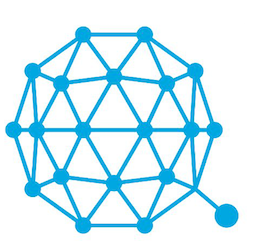
QTUM (pronounced Quantum) is an open-source value transfer platform which focuses on mobile decentralized apps or Dapps. QTUM is the world’s first proof-of-stake smart contracts platform.
QTUM is meant to be used as both a value transfer protocol, like Bitcoin, and a smart contract platform, like Ethereum. They have a number of technical innovations which some consider to make it superior to Ethereum, and they are focusing on mobile applications.
The platform itself is very new. It came about in March 2017, after a highly successful crowdfunding campaign raised them nearly 16 million dollars in only 5 days. QTUM has a small but strong development team and an impressive list of investors backing their ideas. QTUM’s development is lead by the Singapore-based QTUM Foundation.
For further reading on the background of QTUM and what sets them apart, see “What is QTUM”. You can also learn more about the projects on QTUM.
#28 – Ontology (ONT)
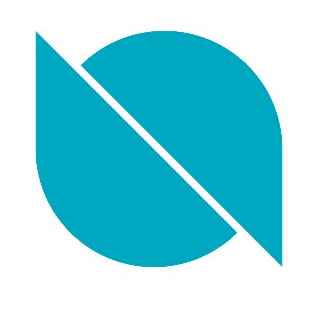
Ontology is a “next-generation” business and enterprise oriented blockchain network that aims to become a trust-based ecosystem. In this ecosystem, users will utilize the decentralized Ontology platform to interact with each other, without the need of an intermediary.
Building on the basic principle of blockchain technology, Ontology takes it a step further by creating an integrated protocol system. Their main focus is on trust, identity and date exchange authorization between different parties in an enterprise relationship.
Through this system, users can easily find a protocol that helps with the transaction or interaction they want to conduct through the Ontology platform. This can be identify verification, data exchange, data collaboration, community building, plus many more user and industry specific applications.
Ontology has successfully launched their mainnet.
The Ontology network is run by a large team and is directed by Onchain, a technology company specialized in blockchain research and development. Onchain’s community decided to create the Ontology platform to further the applications and real-world implementation of blockchain technology.
To read more about Ontology, see their website and reddit. Our guide to Ontology provides an overview of the project, and here’s some information on the growing Ontology ecosystem.
#29 – Lisk (LSK)
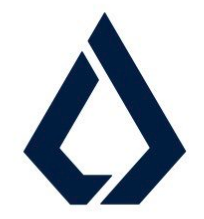
Lisk is a decentralized network, like Bitcoin and Litecoin, which enables developers to deploy their own side chains off the main Lisk blockchain. These side chains are fully customizable blockchains which enable you to change the parameters you want to fit your own blockchain application.
This is similar to Ethereum and QTUM in some ways. With Lisk, the main difference is that the customizable blockchains split into their own separate side chains. This saves developers the grueling legwork of designing something from scratch. At the end of the day, side chains are only decentralized databases of blockchain applications.
Lisk is being developed by a small but quickly growing Berlin-based team. They are led by co-founders Max Kordek and Olivier Beddows who are veterans in the cryptocurrency and development world.
For a thorough look into Lisk including more on what Lisk does, its competitors, challenges and teams, see “What is Lisk” or see our four part article series on Lisk starting with: “Understanding Lisk (Part 1): The Lisk Platform Explained“.
#30 – Zilliqa – (ZIL)
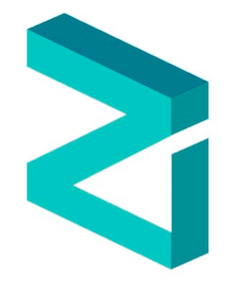
Zilliqa is a blockchain platform which focuses on solving the problem of scaling on public blockchains. With Zilliqa’s network, the number of transactions increases at a linear rate to the number of nodes.
This means that as nodes increase, so will its ability to handle high transaction volume. Zilliqa has already run a successful test on their network, where they were able to achieve 1,200 transactions per second with only 2,400 nodes.
Zilliqa also is the first blockchain to successfully integrate “sharding” into a public blockchain. This concept is extremely useful in improving the rate of scalability, bandwidth and performance in blockchains. Sharding, in effect, splits nodes into “shards” which can then conduct micro-transactions in each blockchain block.
In addition to this, Zilliqa claims to be more energy-efficient to mine. They also plan to implement dapps into their platform in the future.
For more information on Zilliqa, see their website and reddit. Our article “What is Zilliqa” provides an overview of the project.
#31 – Aeternity (AE)
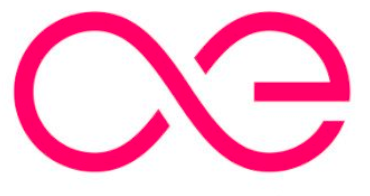
Aeternity is an open-source decentralized computing and digital asset platform which aims to improve upon cryptocurrency governance, scalability, scripting safety and cheap access to real-world data on the blockchain.
Aeternity plans to solve the issue of network scalability by keeping transactions off the blockchain and on what they refer to as “state-channels,” until there is a discrepancy or the data needs to be enforced.
The real-world data is processed through Ethereum smart contracts and what Aeternity refers to as “smart oracles.” These oracles are meant to reduce some of the high costs and inefficiencies which Aeternity believes are complicating or even preventing the realization of many applications.
Aeternity argues that other projects which are attempting to bring real-world data into the blockchain will fail because they are building the consensus mechanism inside of the smart contract itself, which in turn jeopardizes security and sacrifices efficiency.
Aeternity looks to solve this problem by creating an improved consensus mechanism designed to process information pulled from outside the blockchain, in addition to what is inside.
For more information on Aeternity, see their whitepaper and website. You can also check our our project overview, “What is Aeternity.”
#32 – Bitcoin Diamond (BCD)
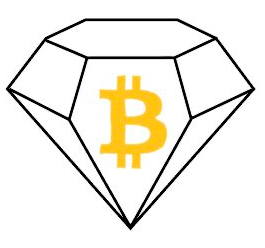
Bitcoin Diamond (BCD) came about after the early 2018 Bitcoin fork. BCD is a currency focused on private transactions, which puts it in the same grouping as other privacy coins out there such as Monero, Zcash and Verge.
One of the main differences between BCD and Bitcoin is that they multiplied the total circulating supply of coins by 10, which will result in a total of 210 million coins.
Due to the lack of any real technical improvements over other privacy coins, coupled with an almost silent team, many have called BCD a scam. Arguments for this assertion can be seen in articles such as this.
For more information on BCD, see their website.
#33 – BAT (BAT)
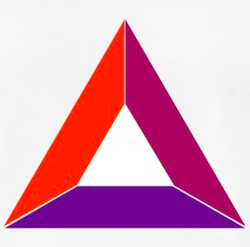
BAT (Basic Attention Token) is an open-source token based on the Ethereum blockchain which rewards publishers and advertisers for providing high quality content to users. It promises to bring a quantifiable benefit to all three major players of digital advertising: publishers, advertisers, and users.
BAT functions in partnership with Brave Browser, a browser that focuses on low-bandwidth usage, fast browsing speeds, and privacy.
BAT has set out to revolutionize the online advertising world with the implementation of the Brave Browser, which gives users the ability to turn on and off advertising. Users who turn off advertising will have full functionally of the Brave Browser while users who have opted-in to advertising will receive more light-weight, less intrusive browsing and ads that more focused on the interests of the user.
Users will also receive a share of BAT tokens for the time they spend viewing advertising. In addition users will have the option to pay for products with BAT tokens themselves.
The BAT team consists of Brendan Eich, the founder of Brace, co-founder of Mozilla and Firefox; Brian Bondy, creator of Javascript, who has worked on projects such as Mozilla and Evernote; Tan Zhu who worked in Yahoo; and Catherine Corre from AOL and Netscape.
For more information on what BAT does, see “What is BAT” and the BAT website. For more on BAT as as investment, check out “Should You Invest in BAT? (Opinion)“.
#34 – BitShares (BTS)
BitShares was founded in 2014 by Dan Larimer, a cryptocurrency visionary and early adopter. He first started working with Bitcoin in 2009. But after some centralized exchanges started to shut down for no apparent reason, Larimer realized that a decentralized exchange is necessary. From this idea, BitShares was born.
As Larimer explained in this blog post, BitShares is, amongst other things, a software, network, ledger, community and most notably a decentralized peer-to-peer exchange. BitShares aims to remove the need to trust a centralized authority to oversee transactions and handle funds.
Dan Larimer has an extremely impressive resume, and has been the lead developer on both EOS and Steem, in addition to Bitshares.
More information on Bitshares and how to use their exchange can be found on their website. You can also read our article “What is Bitshares” to learn more about the project.
#35 – Nano (formerly RaiBlocks) (NANO)

Previously known as RaiBlocks, Nano is a coin focused on tackling the problem of scalability. As described in their whitepaper, this coin has near-instant transactions with very low fees. They operate with the motto of “do one thing and do it well.”
Their goal is to give users a level of performance and scalability that is unmatched by any other platform. Nano achieves this with a unique programming structure where each account has its own unique blockchain. This allows each chain to update asynchronously to the network which results in fast transactions and minimal overhead.
For updates on the Nano project, see their website and reddit page. For further reading, see “What is Nano? (RaiBlocks)” and “Is the Future Bright for Nano?”
#36 – Bytecoin (BCN)
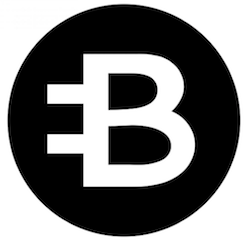
Bytecoin describes itself as “a private, decentralized cryptocurrency with with open source code that allows everyone to take part in the Bytecoin network development.” It is the first coin to offer untraceable payments, unlinkable transactions and resistance to blockchain analysis.
With Bytecoin, it is possible to send instant transactions anywhere around the world, which are totally untraceable and don’t require additional fees.
Bytecoin’s development is community-driven and a list of all of the different community websites can be found here.
For more information on Bytecoin, see: “What is Bytecoin.”
#37 – ICON (ICX)
![]()
Fresh off a successful ICO, the Korea-based startup ICON is looking to provide a medium to connect all the different blockchains together. This puts ICON in the same field as Ark, which is attempting to accomplish similar goals.
The main concept of ICON is their idea of a “loopchain.” As stated in their whitepaper, a loopchain can be described as a “high-performance blockchain that can provide real-time transaction, which is based on enhanced Smart Contract.” Through ICON, participants will be able to connect to any blockchain without relying on the current centralized exchanges.
ICON has a relatively large team from various backgrounds. They have also secured the help of a few notable advisors such as Jason Best and Don Tapscott.
For more information on ICON and the work they’re doing, see “What is ICON.” Learn about ICON as an investment in “Is ICON a Potential Moonshot? (Opinion)” and “ICON – The Interlinking Blockchain That’s Ripe for an Investment.”
#38 – Pundi X (NPXS)
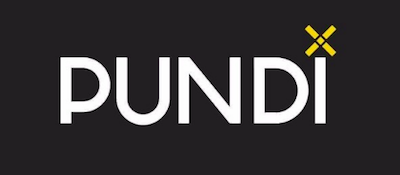
Pundi X is a hardware Point-of-Sale, or POS, system for accepting cryptocurrency. They currently have a machine that sits on top of a counter, called XPOS, with two screens: one for the merchant and one facing the customer. It has an RFID chip, it can print receipts, and it displays QR codes for people to pay using their wallet apps.
Pundi X is also issuing a card that can store cryptocurrency amounts. It’s the same size and shape as a credit card, so it is familiar in form and function to people who are new to cryptocurrency.
Pundi X originates in Indonesia, and while cryptocurrency exchanges are permitted, cryptocurrency payments for goods and services are currently banned by the government. Pundi X is able to deploy their hardware without breaking the law because their POS system defaults to accepting payments from non-cryptocurrency systems, like bank cards and Apple Pay.
For further reading on Pundi X, see “What is Pundi X.”
#39 – Siacoin (SC)
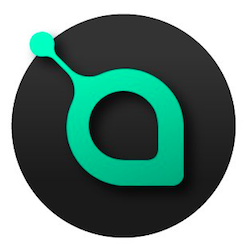
Siacoin aims to disrupt the world of cloud storage. What sets Saicoin apart is that it is a decentralized, encrypted, peer-to-peer cloud storage platform. Siacoin has been able to dramatically reduce the overhead of cloud storage by allowing users to (in a sense) “rent out” their unused hard drive.
Siacoin was created by Luke Champine and David Vorick of Nebulous Inc. The Saicoin team chose not to hold an ICO. Instead, Siacoin came to life when its genesis block was mined. Even without an ICO, the Sia team managed to raise over $1.25 million in funding through investors such as Fenbushi Capital, Raptor Group, Procyon Ventures, along with angel investors like Xiaolai Li.
Siacoin has a few major competitors such as MaidSAFE and Storj. An analysis of the three coins can be found here.
For up-to-date information on Siacoin, see their website and reddit page. You can also read our article “What is Siacoin.”
#40 – DigiByte (DGB)
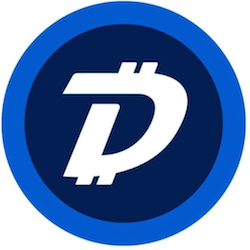
DigiByte is an open-source blockchain which first came into existence in January 2014, making it one of the oldest blockchains in existence. It was founded by developer Jared Tate, who today still leads the project.
DigiByte focuses on cybersecurity for digital payments and smart applications. It is highly decentralized with over 100,000+ servers, computers, phones, and nodes worldwide. DigiByte utilizes five secure and advanced cryptographic mining algorithms to prevent mining centralization which is common in single algorithm blockchains such as Bitcoin.
In addition, DigiByte has some other technical improvements over Bitcoin such as increased scalability and the implementation of technologies such as Digishield, MultiAlgo, MultiShield and SegWit.
For more information on what DigiByte does, including a history of the platform, details on their team and things to look for moving forward see: “What is DigiByte.”
#41 – Steem (STEEM)

Steem is the first blockchain to set out to disrupt the world of social media. Most social media platforms today do not reward users for providing high quality content to their audience (one notable exception is YouTube, where content creators can earn a small percentage of the advertising revenue).
Steem has turned this idea around by offering a platform where users are incentivised to create high quality content. Actions such as liking, sharing and upvoting will earn micro-rewards as well. This article describes the platform’s payment and tipping structure.
In addition, Steem is completely decentralized; this means there is no governing body that censors or stores user information to later sell to companies. This gives Steem some clear advantages over social media giants such as Facebook.
Steem was founded by Ned Scott and Dan Larimer. Dan Larimer has worked on a few other very successful blockchain projects such as Bitshares and EOS.
For a detailed analysis of Steem, including more information on the team and their competition, see “What is Steem.” If you’re interested in using Steem, our guide can help: “Steemit Review: How Does It Work and Can You Really Earn From It?”
#42 – Verge (XVG)
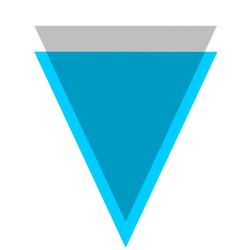
Verge is a secure and decentralized P2P electronic payment system which is designed for sending transactions privately. Verge has a public ledger similar to Bitcoin, but unlike Bitcoin you won’t be able to see the public addresses of the transactions that are conducted. This privacy is achieved using the Tor (The Onion Router) and I2P (Invisible Internet Project) technologies to hide the IP addresses of users.
Verge was originally known as DogeCoinDark, and then rebranded to Verge in 2016. The creators of Verge wanted this coin to be thought of as a legitimate form of currency, not just a way to pay for illicit items.
Verge’s development is community-driven. Much of the development is done on a voluntary basis by various developers. More information on the team can be found here.
For more information on Verge’s technology, team and what the future holds, see “What is Verge” and their blackpaper (what Verge calls their whitepaper). This blog post is also a great analysis and is worth looking at.
#43 – Populous (PPT)

At a glance, Populous is a global invoice trading platform built on blockchain decentralized ledger technology. Populous connects business owners and with invoice buyers by using the security, transparency and speed of blockchain technology.
Populous is built off the Ethereum protocol, and it gives the average investor the ability to participate in an alternative finance marketplace which in the past was only accessible to financial institutions, wealthy individuals and governments.
This platform allows investors from any part of the world to invest in an invoice sold by an invoice seller from anywhere in the world. An example use case would be if an investor in the US bought the invoice of a Chinese manufacturing company while the Chinese company uses that loan to finance their operations in the short term to put a product to market.
Invoices will be awarded via an auction. Investors will be paid via interest once the invoice has filled.
The team is UK-based and is led by CEO Stephan Williams and CTO Zvezdormir Zlatinov. The project is still in its infancy stage and there isn’t a lot of information on the development.
For more information on Populous including its history, team and where to buy the coins, see “What is Populous.”
#44 – Bytom (BTM)
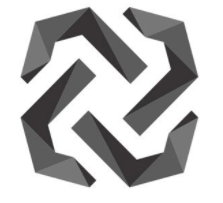
Bytom was created to “transfer assets from the atomic world to byteworld.” In this case, “atomic assets” refer to traditional assets from the physical world such as bonds, securities, dividends or intelligence information.
Bytom wants to improve income asset management by making it easy to transfer these assets via smart contacts. They also want to digitize the management of non-public securities and options, in addition to increasing asset securitization. Asset securitization is simply the ability to register and tokenize any asset from the atomic world, and easily put it on the blockchain.
For more information on Bytom, see their website and reddit page.
#45 – Aurora (AOA)
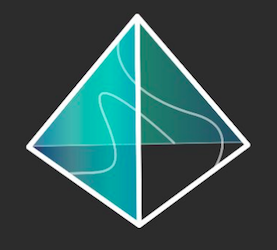
Aurora is a smart contracts platform which combines DPoS and BFT consensus mechanisms. They plan on creating “lightning fast contracts” with the hope of facilitating the easy creation of dapps.
According to their whitepaper, Aurora’s main goals are to facilitate the incorporation of blockchain into new industries, perfect smart contracts, increase transaction speed, and improve some blockchain difficulties such as data storage costs.
For more information on Aurora see their website and Medium page.
#46 – Chainlink (LINK)
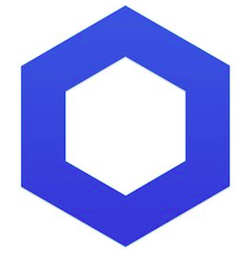
Chainlink is effectively applying smart contracts to the offline world by creating different APIs which will be compatible with off-chain-based software.
Today, no one has been able to connect a smart contract with an external data feed. Solving this roadblock would be a big step forward for the world of blockchain, as it would provide many “low-tech” companies the ability to leverage the power of blockchain.
Chainlink aims to provide a solution as it is working on creating decentralized oracles which will allow non-blockchain based projects to interact with the Chainlink blockchain.
Chainlink has been staying under the radar, not hyping their project or putting too much time into marketing. However, with the announcement of partnerships with some well-known names in the crypto world such as Polkadot and Factom, people are starting to take notice.
Chainlink has a very active Github and Reddit community. You can also go to Chainlink’s website for more information on the project.
#47 – Waves (WAVES)
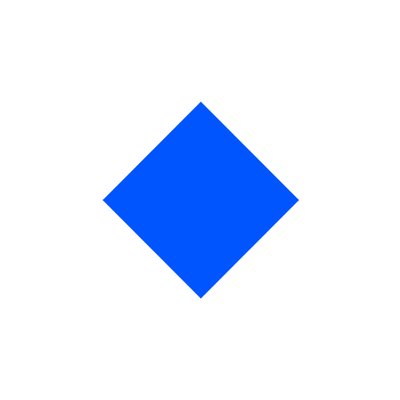
“Your blockchain token in one minute” was Waves’ original slogan. Though it has been changed due to the increase in services offered, what they said then is still relevant today. Waves is the first blockchain platform which has made it very easy for someone without coding experience to make their own blockchain token!
There are many other platforms out there which enable you to create your own token, most notably Ethereum. But unlike Ethereum, there is no need to learn a new coding language to create a token on Waves.
In addition to token creation, Waves launched its own decentralized exchange which allows you to exchange newly-created tokens with existing tokens and fiat currencies.
The founder and CEO of Waves is Sasha Ivanov, who is no stranger to the crypto world. He was the founder of the exchange coinomat.com.
For more information on Waves, including a list of their competitors and legal issues, see “What is Waves”. You may also be interested in “Could Waves Become the Top ICO Platform?“.
#48 – Metaverse ETP (ETP)

Metaverse is working to provide digital financial services through blockchain. They are a part of the very new but fast growing Blockchain-as-a-Service (BaaS) industry.
With the Metaverse platform, users are able to create their own digital identity as well create and store digital assets. Digital assets can be almost anything such as titles of ownership, tax records, receipts or just about any other form of documentation.
Metaverse is focusing on providing value for businesses as opposed to developers. This, coupled with their focus on “digital identities,” puts them in the same category as NEM. The ETP token will be used to pay for transactions on the Metaverse network.
For more information on Metaverse, see their website and Reddit page. You can also check out “What is Metaverse (ETP)?” for an overview of the project.
#49 – Augur (REP)
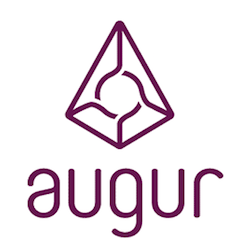
As described in their whitepaper, Augur has set out to create the first decentralized, open-source platform for prediction markets. Based on the ideas of game theory and wisdom of the crowd, prediction markets achieve greater forecasting accuracy than any individual experts can. However, the problem with previously existing prediction markets is that they were all centralized.
By providing a decentralized solution, Augur allows people from anywhere in the world to ask a question about the outcome of a future event, as well as buy and sell shares on the outcome of any market they wish to participate in. Moreover, it allows thousands of users to report on outcomes, thus removing the need to trust in an individual reporter.
Augur has assembled an experienced team of developers, led by co-founders Jack Peterson and Joey Krug. Additionally, they have several notable advisors including the founder of Ethereum, Vitalik Buterin, trading expert Ron Bernstein, economist Dr. Robin Hanson, CEO of Enlighted Joe Costello, and Lightning Network founder Elizabeth Stark.
The Augur platform is now live.
For more analysis on Augur, including challenges and what the future holds, see “What is Augur” and “7 Reasons to Be Excited About Augur.”
#50 – Golem (GNT)
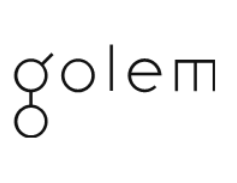
Golem’s plan is to create a global, open-source, decentralized supercomputer that can be used by anybody who has internet access. Golem doesn’t actually supply the computational power itself. Instead, they allow people who have unused computational power to “lend” it out to users who need it, for a fee.
In that sense, you can think of Golem as the Airbnb of computing. Just about any situation where heavy computation is necessary – medical research, AI development, computer graphics, cryptography, etc. These are good potential use cases for Golem. All computation is done on virtual machines, so hosts don’t have to sacrifice security to offer their computing power.
For more information on the team and development, see Golem’s website and whitepaper. You can also read our guide to Golem.
If you liked this article, check out The Periodic Table of Cryptocurrencies and Top 100 Cryptocurrencies Described in 10 Words or Less. For a more analytical look at the top cryptocurrencies, see Cryptocurrencies in the Top 100 With Working Products That Are In-Use.

